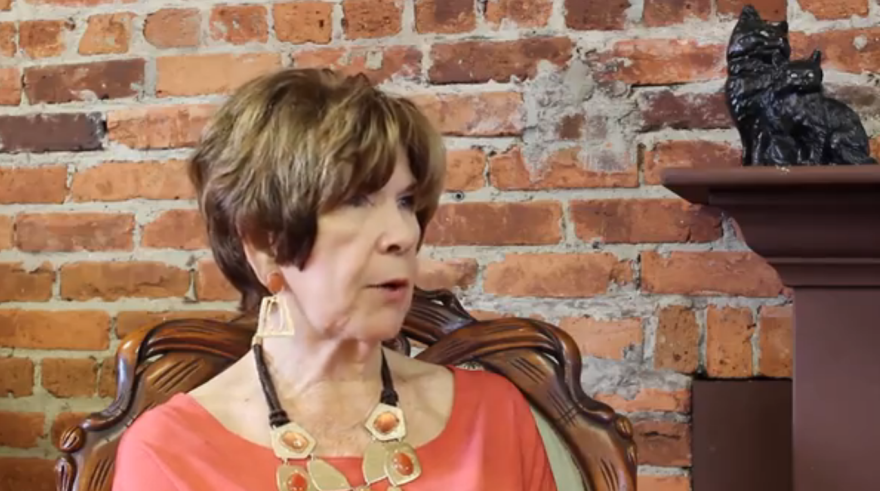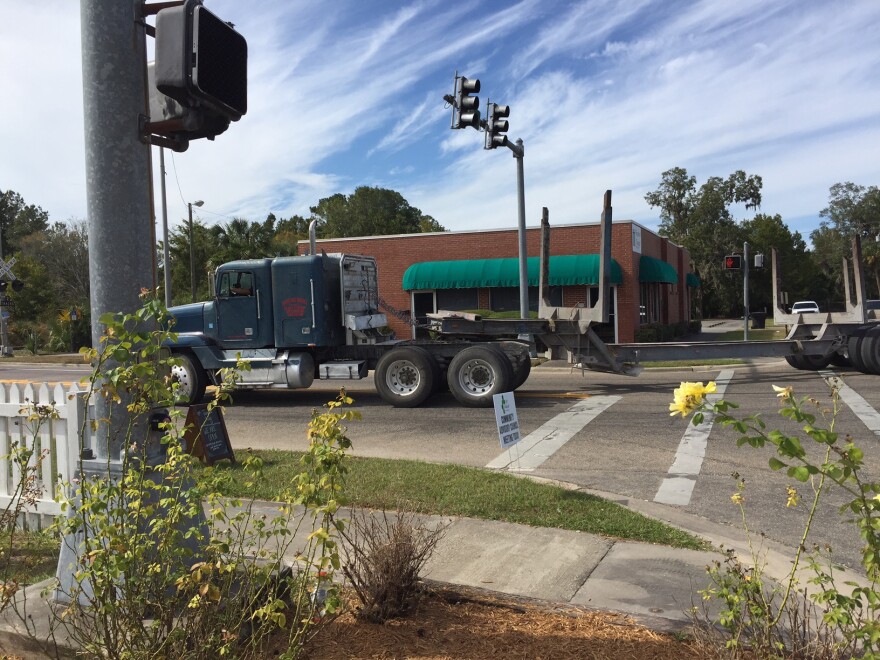The Fenholloway River runs 36 miles through rural Taylor County before flowing into the Gulf of Mexico. But it’s not found on most maps. For years, it was used for industrial dumping—a designation granted by the state in order to lure manufacturers to the area. Today, the Foley Cellulose Mill is the largest of those businesses. For many, the plant and the county are part of one communal identity, and when it comes to a fight over an impending wastewater pipeline, Taylor residents are siding with the company.
Decades ago, dozens of families called the Fenholloway River home.

“I grew up in the community of Fenholloway. My great-great grandparents lived in Feholloway. My grandparents were in Fenholloway. And my family, all my siblings, grew up in Fenholloway," says longtime Taylor County resident Vivian Sheffield. She remembers a community where everyone looked after each other, of tire swings and special swimming holes, and fish-frys on hot, summer afternoons.
That was a time before the state designated the Fenholloway an industrial river. Before the cellulose plant was built. Before the river became fouled.
"I moved from Fenholloway when I entered Junior High," says Sheffield. "At that time, change started happening of course. And the river wasn’t used for recreation much then."
"I've never been one to go down there and find a fish, but I've heard stories about it."
Then there are the stories of glowing fish, and some with three eyes.
I’m not gonna lie to you. And I've never been one to go down there and find a fish, but I've heard stories about it," says Venita Woodfaulk, Perry City Commissioner.
Perry and the Mill

In downtown Perry, big trucks laden with logs rumble back-and-forth. The signs of the area's main industry are everywhere, from Little Pine Pediatrics, to Tree Capital and the Cypress Mill Bar. Tax Collector Mark Wiggins is keenly aware of the deal the county has struck between the environment and the economy.
“I think it comes back to a quality of life issue. In ’54, what did Perry look like? What did Taylor County look like? What was the poverty level? Is it worth sacrificing a body of water? I can’t tell you the answer to that. I can tell you what they’ve done since they’ve been here," he says.

The cellulose plant and mill directly employ 500 people. Industries that support it make up thousands more jobs in the region. The river runs through a golf course built for mill employees. The company backs local soccer clubs, schools and charities. It participates in community development efforts, and it has the largest tax bill in the county. In the past year, Taylor County, its residents, and its Foley Cellulose Mill have been swept into a fight over how to deal with the plant’s wastewater. The plant is planning on building a pipeline to bypass most of the river and carry the wastewater closer to the Gulf. Opponents don’t think that’s a good idea.
“They need to clean it up, but they just flat refuse," says the Florida Clean Water Action Network's Linda Young. She's not alone. Wakulla County Commissioner Howard Kessler despises the project and worries it could hurt the areas springs and Wakulla’s fledging oyster farming industry.
“We’re 20 miles away as the crow flies," Kessler says. "This is right on our doorstep.”
"I want to see this community grow. I want my children, your children, to come back to this community and put back into it what they got out of it."
A Plant With A Plan

The plan has already been by the state and federal regulators and the project is moving forward. Furthermore, what’s going into the river now, is not the same as what used to go in. The company has spent more than $100 million on river clean up and restoration efforts to the river, along with treatment upgrades to its facility. It will spend another $20 million for the pipeline which will run alongside and under roads and intersections, and eventually let out here. At a boat launch. Where two fishermen have just come in for the day.
They've been fishing here all their lives, and usually catch speckled trout and redfish. The area is lush with sea grass, palm trees, and shrubs, and birds. The distance between the discharge point at the boat ramp and the Gulf of Mexico is about 2.5 miles," says plant spokesman Scott Mixon.
The water here is a glassy black that turns the color of a dark tea as its chopped up by a boat motor. The plant’s Chet Thompson heads up Fenholloway management for the company. He says the restoration goal is to make the wastewater reach the same salinity and color as what’s already in the estuary.

"We’re monitoring for transparency. This (water) is meeting the criteria today and matching up with a system like the Econfina (River). This blackness level, is normal blackness," Thompson says.
Thompson is on the river constantly. He’s lived in the area for 20 years. Most Foley Mill Employees are also longtime residents and they know this river. They live, work and play on it and it has an almost sacred resonance to the people of Taylor County. The company says it’s committed to continued restoration efforts. And there’s a widespread acknowledgement of the tradeoffs that have come over the years.
http://video.wfsu.org/video/2365898564/
Tax Collector Mark Wiggins says if he had to make the choice of sacrificing the river to create tens of thousands of jobs, “I would probably say yes. And it would be selfish to say yes. But I would probably do it. I want to see this community grow. I want my children—your children—to come back to this community and put back into it what they got out of it.”
And that’s a tradeoff most people say they’re willing to accept.




